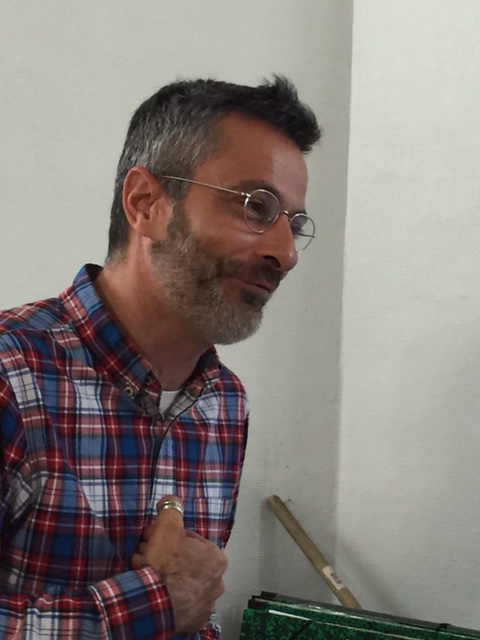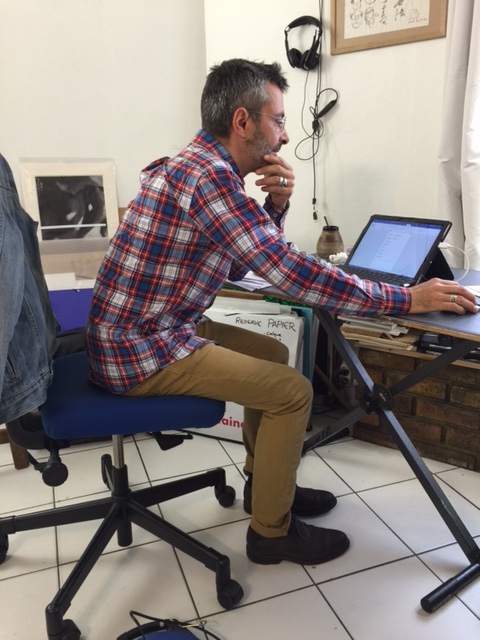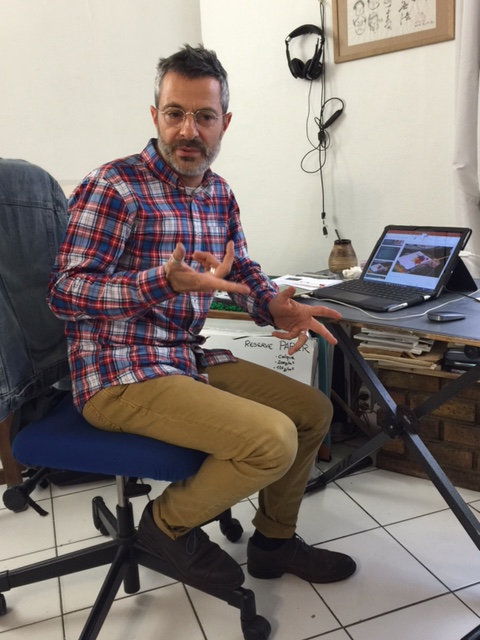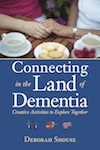Posts Tagged ‘Paris artist’
Tips from a Parisian Artist
 There’s something magical about visiting an artist in his studio. Especially if that studio is in Paris. We were honored to meet Patrick Laurin, artist and art therapist, on a recent trip to France.
There’s something magical about visiting an artist in his studio. Especially if that studio is in Paris. We were honored to meet Patrick Laurin, artist and art therapist, on a recent trip to France.
In the beginning, Patrick Laurin’s work with people who were living with dementia went slowly. When he first visited the care home and invited people to join him for painting, he heard various reasons the idea wouldn’t work. “I can’t hear you.” “I can’t see you.” “I can’t move my arm.”
 Patrick, who had quit working as researcher in the pharmaceutical industry so he could create deeper connections with clients, understood the importance of building relationships. Gradually, he got to know the people who lived in the community. He wanted to tailor an artistic experience specific to each person’s abilities and needs.
Patrick, who had quit working as researcher in the pharmaceutical industry so he could create deeper connections with clients, understood the importance of building relationships. Gradually, he got to know the people who lived in the community. He wanted to tailor an artistic experience specific to each person’s abilities and needs.
Over time, the people who couldn’t see, hear, or move were all happily involved in painting.
One woman seemed to blossom when holding the brush and stroking on the paint. Even though she couldn’t later remember to say, “I’ve been painting,” she enjoyed the experience.
One day, Patrick was on another floor in the care community when he encountered this woman and her daughter.
Her daughter said to Patrick,” You are the painter.”
Patrick was thrilled her mother had been able to mention the art therapy sessions. But before he could respond, the mother said, “No, the painter is me.”
“Inside, she was seeing herself as an artist,” Patrick says. “The painting strengthened her identity.”
 Patrick has learned to approach each person with flexibility. Sometimes Patrick jump starts his artists with a squiggle of color on the page. Then he steps back to let them respond with their own squiggle. If they’re stymied, he offers a choice of two colors.
Patrick has learned to approach each person with flexibility. Sometimes Patrick jump starts his artists with a squiggle of color on the page. Then he steps back to let them respond with their own squiggle. If they’re stymied, he offers a choice of two colors.
He also uses collage techniques to inspire his artists. He selects three separate pictures, each with one recognizable thing, such as a house, tree, or dog. He shows the photos to the artist, and asks, “Which one of these attracts you?” When the artist chooses a photo, Patrick then asks, “Where would you like to put this on the paper?” He and the artist apply paste to the paper.
“We don’t turn over the picture and apply paste, because the image then disappears and that can be confusing,” he says.
When the picture is glued to the paper, Patrick discusses a color that’s already in the picture.
“You could take the blue in the sky and extend it,” he might suggest. This suggestion often inspires the artists to start painting. If they get stuck, Patrick says, “What might look good near the house?” In this way, the painting expands.
For one woman, painting began as a series of colors and grew into a personal story.
She pasted a house and began expanding the lawn. Then she drew a bridge and weeks later, she added in a dog. At first, she was painting “a house, a bridge and a dog.” As the picture took shape, she said, “This is my house and my dog and this is the bridge we had to cross to get to the house.” The process of painting had loosened memories of her childhood home.
 “When I share a piece of art by one of my students, I also share the story behind it,” Patrick says. “The act of creation is more important than the results.”
“When I share a piece of art by one of my students, I also share the story behind it,” Patrick says. “The act of creation is more important than the results.”
Tips:
Pick something that is easy for you, the care partner.
Put a point of color on the pages, then stand back. Offer support but don’t paint.
Enjoy the process and don’t get stuck on the results.
Thanks to Berna Huebner, founder of the Hilgos Foundation and co-producer of the documentary, “I Remember Better When I Paint,” for suggesting we meet with Patrick.

